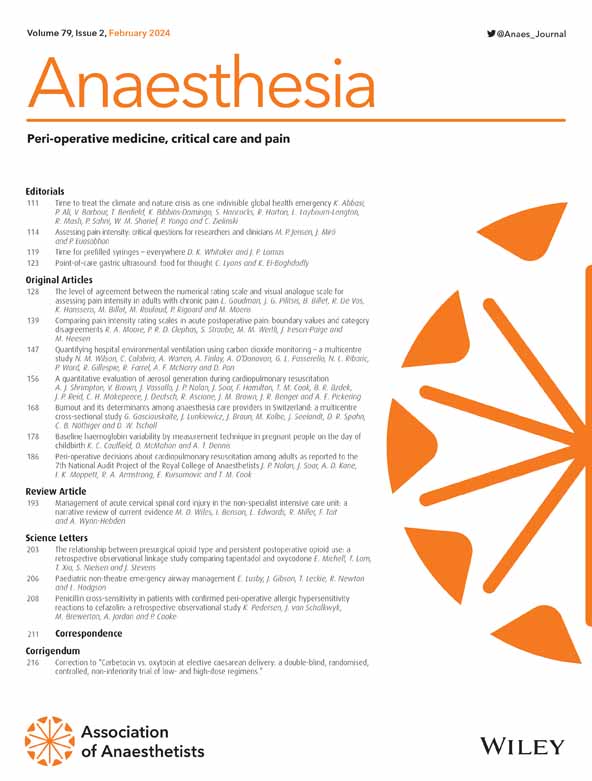超声引导区域麻醉模拟训练的教学设计特点:系统回顾
IF 7.5
1区 医学
Q1 ANESTHESIOLOGY
引用次数: 0
摘要
超声引导下的局部麻醉可改善疼痛控制,改善患者预后,降低医疗费用。然而,有效地教授这项技能对当前的培训方法提出了挑战。基于模拟的医学教育与传统方法相比具有优势。然而,在超声引导的区域麻醉模拟训练中使用教学设计特征尚未明确。本系统综述旨在使用改进的Kirkpatrick模型识别和评估超声引导区域麻醉模拟训练中各种教学设计特征的普遍性及其与学习结果的相关性。方法进行全面的文献检索,包括成立至2024年8月的研究。入选标准包括随机对照试验;前后对照研究;其他实验设计侧重于超声引导区域麻醉模拟训练。数据提取包括研究特征;仿真方法;教学设计特点;和结果。结果在纳入的2023篇文献中,62篇符合纳入标准。常见的模拟模式包括实时模型扫描和凝胶幻影模型。教学设计的特点,如专家教师的出现,重复练习和多种学习策略是普遍存在的,在多个结果水平上都显示出显著的改善。然而,很少有研究评估行为(Kirkpatrick 3级)和患者预后(Kirkpatrick 4级)。讨论超声引导的区域麻醉模拟训练结合特定的教学设计特征可以提高教育效果;这在较低的Kirkpatrick水平中尤为明显。对于更高水平的结果(Kirkpatrick水平3和4),教学设计特征的最佳组合仍不清楚。未来的研究应该标准化结果测量和隔离个别教学设计特征,以更好地了解它们对临床实践和患者安全的影响。本文章由计算机程序翻译,如有差异,请以英文原文为准。
Instructional design features in ultrasound‐guided regional anaesthesia simulation‐based training: a systematic review
SummaryIntroductionUltrasound‐guided regional anaesthesia enhances pain control, patient outcomes and lowers healthcare costs. However, teaching this skill effectively presents challenges with current training methods. Simulation‐based medical education offers advantages over traditional methods. However, the use of instructional design features in ultrasound‐guided regional anaesthesia simulation training has not been defined. This systematic review aimed to identify and evaluate the prevalence of various instructional design features in ultrasound‐guided regional anaesthesia simulation training and their correlation with learning outcomes using a modified Kirkpatrick model.MethodsA comprehensive literature search was conducted including studies from inception to August 2024. Eligibility criteria included randomised controlled trials; controlled before‐and‐after studies; and other experimental designs focusing on ultrasound‐guided regional anaesthesia simulation training. Data extraction included study characteristics; simulation modalities; instructional design features; and outcomes.ResultsOf the 2023 articles identified, 62 met inclusion criteria. Common simulation modalities included live‐model scanning and gel phantom models. Instructional design features such as the presence of expert instructors, repetitive practice and multiple learning strategies were prevalent, showing significant improvements across multiple outcome levels. However, fewer studies assessed behaviour (Kirkpatrick level 3) and patient outcomes (Kirkpatrick level 4).DiscussionUltrasound‐guided regional anaesthesia simulation training incorporating specific instructional design features enhances educational outcome; this was particularly evident at lower Kirkpatrick levels. Optimal combinations of instructional design features for higher‐level outcomes (Kirkpatrick levels 3 and 4) remain unclear. Future research should standardise outcome measurements and isolate individual instructional design features to better understand their impact on clinical practice and patient safety.
求助全文
通过发布文献求助,成功后即可免费获取论文全文。
去求助
来源期刊

Anaesthesia
医学-麻醉学
CiteScore
21.20
自引率
9.30%
发文量
300
审稿时长
6 months
期刊介绍:
The official journal of the Association of Anaesthetists is Anaesthesia. It is a comprehensive international publication that covers a wide range of topics. The journal focuses on general and regional anaesthesia, as well as intensive care and pain therapy. It includes original articles that have undergone peer review, covering all aspects of these fields, including research on equipment.
 求助内容:
求助内容: 应助结果提醒方式:
应助结果提醒方式:


